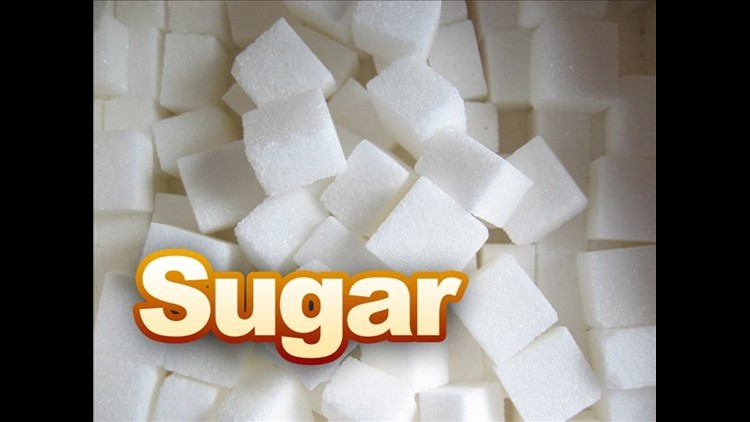(CNN) — Trading cookies and candy for yogurt and granola bars may not be as healthy as parents believe. In fact, some food marketed to children and parents contains more sugar than desserts on grocery shelves.
New recommendations from the American Academy of Pediatrics suggest sugary beverages and sweets be limited to reduce a child’s risk for obesity , an epidemic that has more than doubled in the last 30 years, according to the Centers for Disease Control and Prevention. But some experts suggest also looking at less obvious sources of sugar, many of which children are eating for go-to snacks and breakfast.
Sugar in processed foods is a big problem for Dr. Robert Lustig, a pediatric endocrinologist who runs a weight management clinic for children and families at the University of California, San Francisco.
Some products that appear healthy are actually high in sugar to make them more tasty, and low in fiber to extend shelf life, said Lustig, who authored the book “Fat Chance: Beating the Odds Against Sugar, Processed Food, Obesity and Disease.”
On average, Americans consume 19.5 teaspoons of added sugar per day, and “kids consume even more,” according to Lustig.
While the World Health Organization recommends a person with a 2,000 calorie diet limit sugar intake to 12.5 or 6.25 teaspoons of free sugars, parents don’t need to be “sugar-terrified,” physician nutrition specialist Dr. Melina Jampolis said.
Instead, parents should be aware of hidden sugar content in kid-friendly products. Most labels don’t distinguish between “added” sugars and natural sugars, which naturally occur as fructose in fruit and lactose in dairy, so this could require a bit of detective work.
First, parents can look beyond nutrition labels.
If “it has 12 grams of sugar then you have to look at the ingredient list. If it just says apple and water, then it has no added sugar,” Jampolis said.
In addition, the American Heart Association suggests looking for ingredients ending in “ose” or other names for sugar such as molasses, cane sugar or honey.
Parents can search USDA nutrient content online as well as in grocery stores, and while it may be time-consuming for parents to compare sugar between brands, there is good news: “Once you have your arsenal of products,” said Jampolis, “you only have to do your comparison once.”
Eating natural, unprocessed, whole foods is the best way to avoid hidden sugars. With an apple, you may decide between organic and non-organic, but you don’t have to deal with labels.
“An apple is going to be more satisfying than apple sauce, more satisfying than apple juice,” Jampolis said.
In the long run, eating whole foods — and picking products with lower sugar content — could make a big difference for your child.
“Even 4 grams of sugar makes a difference. It may be only 7 grams versus 11,” in terms of product comparison “But if you’re making five choices a day, that’s 20 grams of sugar you’re saving,” said Jampolis.
Need a place to start your research? Here’s a guide to foods for children that sometimes contain a surprising amount of sugar.
Yogurt
Yogurt touts benefits such as calcium and contains natural sugar from lactose. But parents should look closely at brands marketed toward kids. American products are usually flavored and sugared.
“What is yogurt? Sour milk,” Lustig said. “It’s supposed to be sour. Except in America, where it is dessert.”
While a serving of plain Greek yogurt typically contains 4 gram of sugar, kids’ varieties — of the exact same brand — can run closer to 10 grams.
To adapt your child toward less-sweet varieties, Jambolis suggests adding a bit of jam to plain yogurt.
Cereals
Cereals have been repeatedly analyzed for their variation in nutrition and sugar content.
“On average, children’s cereals have more than 40% more sugars than adult cereals, and twice the sugar of oatmeal,” according to the 2014 report from the Environmental Working Group, which also produces the “Dirty Dozen” report on pesticides in fruits and vegetables.
The group reports that children’s cereals contain more than 2½ teaspoons of sugar per serving on average, “more than two Keebler Fudge Stripe cookies.”
Granola bars
This go-to snack even creates a conundrum for experts.
“I struggle as a mom versus a nutrition doctor,” said Jampolis, who recognizes the need for quick snacks like energy and granola bars for kids. But even organic versions of bars sometimes contain 8 to 12 grams of sugar.
“There is this huge business of food. They are selling you a product instead of whole foods,” said registered dietitian Elaine Magee, who makes her own granola at home. The author of “Tell Me What to Eat if I have Diabetes” also emphasized that cooking at home lets families control ingredients, including how much sugar is added.
Fruit snacks
Fruit snacks and fruit chews are a group of products wearing the “health halo,” according to Jampolis. “Fruit” makes them sound healthy, but the snacks are really just sugar lurking behind the guise of added vitamins. “Sugar with vitamin C added? That’s like candy,” she said.
Some fruit chews geared toward children include as much as 19 grams of sugar in a single serving pouch.
Gluten-free, organic and natural foods
Some kids do need gluten-free options, Jampolis said, but “organic, gluten-free and all-natural doesn’t give parents a free pass” when it comes to nutrition value.
“I don’t care if it’s organic coconut sugar created in Finland,” Jampolis said — it’s still sugar.
There are common misconceptions that products labeled with health terms are automatically healthier, but according to Jampolis. “When it comes to kids’ health and their waistlines and training their taste buds, sweetness is sweet.”



